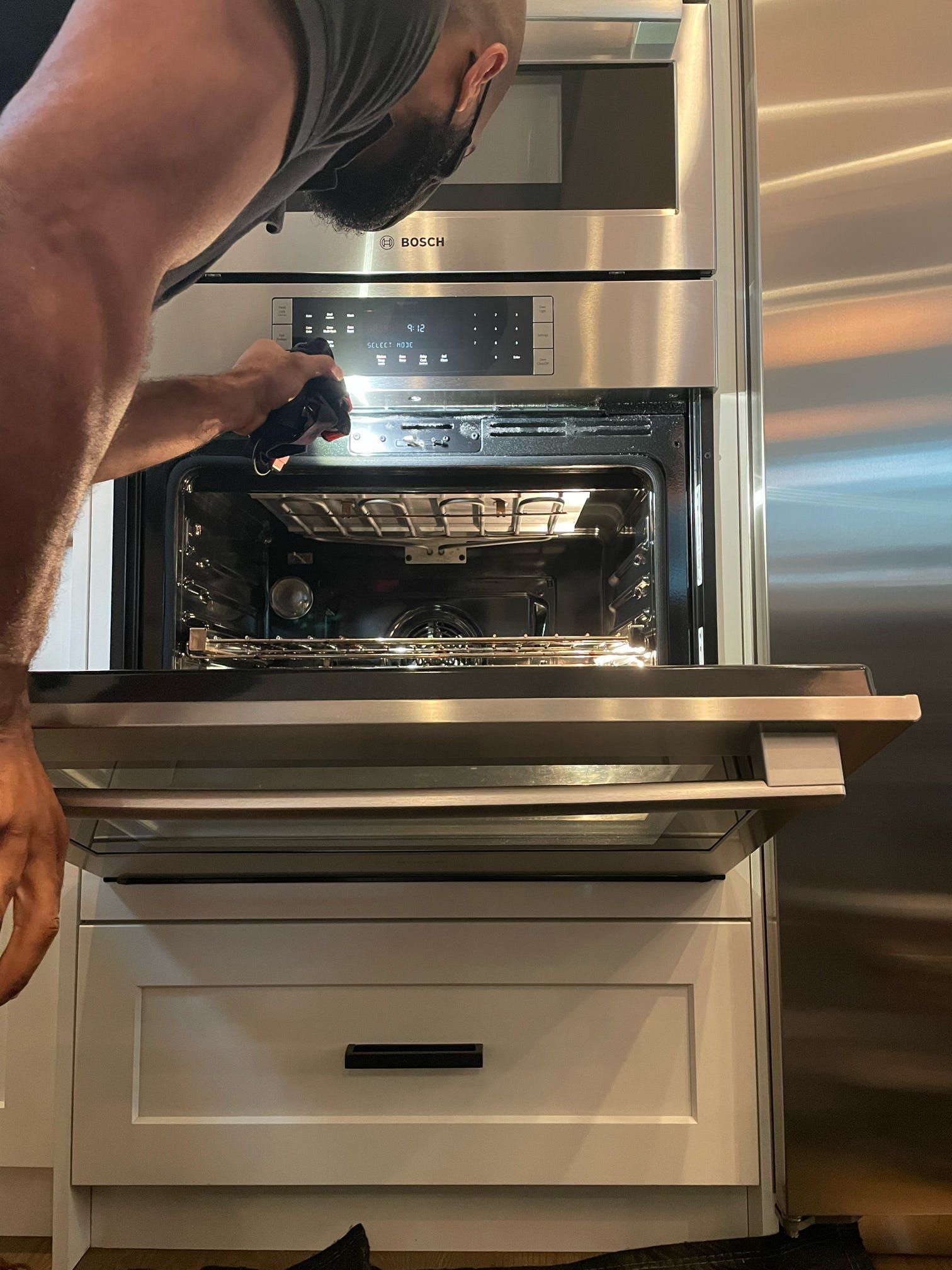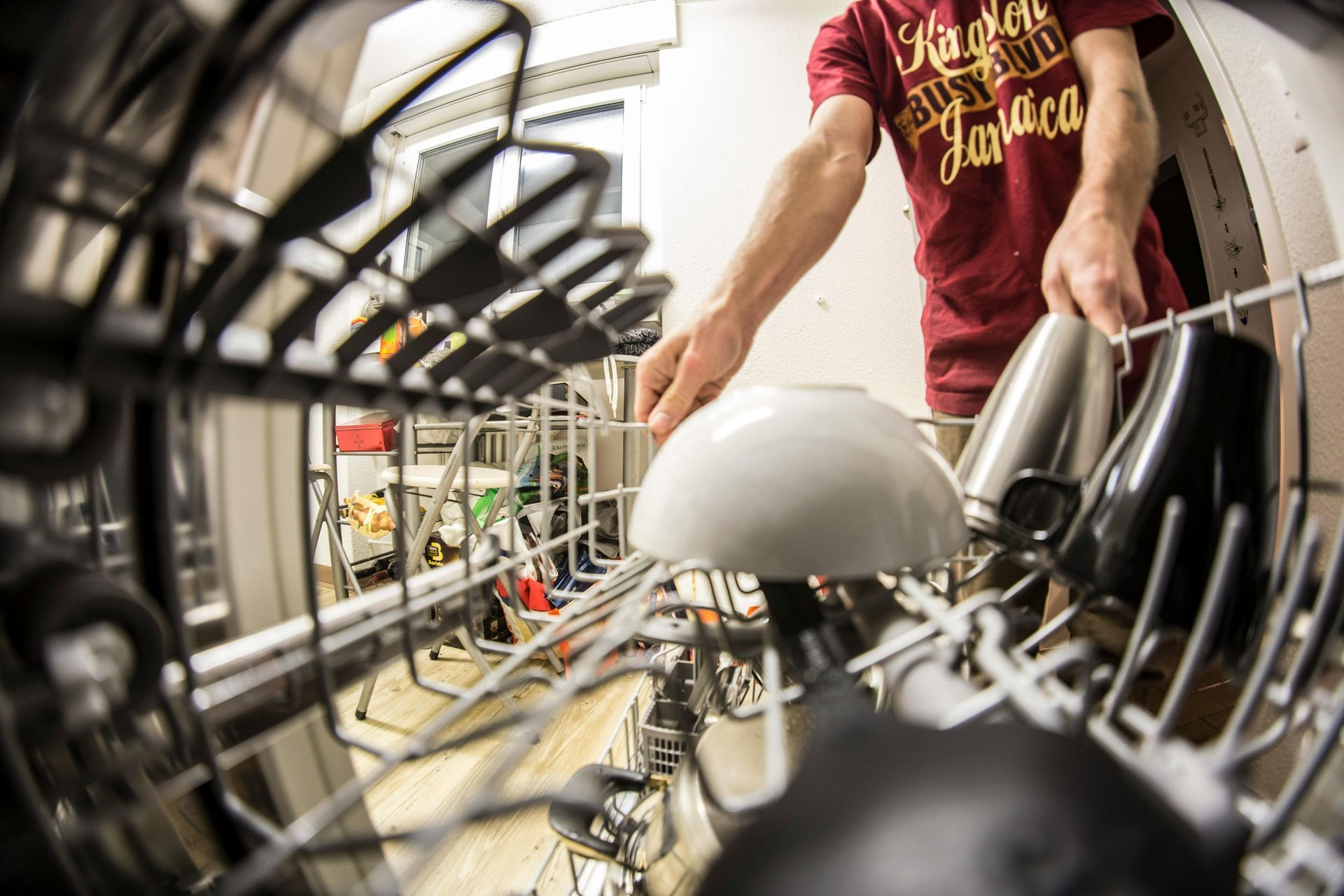5 DIY Tips to Keep Your Refrigerator Running Like New
Your refrigerator works around the clock to keep your food fresh and safe, making it one of the most essential appliances in your home. With proper maintenance and simple DIY care, you can extend its lifespan, improve energy efficiency, and avoid unexpected breakdowns that leave you searching for emergency refrigerator repair in Chicago. These straightforward maintenance tips will help you identify potential issues early and keep your fridge operating at peak performance for years to come.
Key Takeaways
- Regular cleaning of coils, vents, and seals prevents 80% of common refrigerator problems
- Proper temperature settings and organization reduce energy consumption by up to 15%
- Monthly maintenance checks can identify issues before they require professional refrigerator repair
- Simple DIY fixes for door seals, water filters, and drainage can save hundreds in repair costs
- Understanding when to call a refrigerator mechanic prevents minor issues from becoming major repairs
- Proper airflow and ventilation maintenance keeps your fridge running efficiently year-round
1. Clean Your Condenser Coils Every Six Months
The condenser coils are your refrigerator's cooling system, and dirty coils force the appliance to work harder, consuming more energy and potentially shortening its lifespan. When dust, pet hair, and debris accumulate on these coils, heat transfer becomes inefficient, causing your refrigerator to struggle with temperature regulation.
Clean coils can improve your refrigerator's efficiency by up to 30-35% and significantly reduce the likelihood of needing emergency fridge repair Chicago services. If you notice your refrigerator running constantly or making unusual noises, dirty coils are often the culprit.
Step-by-Step Cleaning Process
- Unplug your refrigerator and locate the coils (usually behind or beneath the unit)
- Use a vacuum cleaner with a brush attachment to remove loose debris
- Gently brush stubborn dirt with a coil cleaning brush or soft-bristled brush
- Vacuum again to remove loosened particles and replace any grilles
- Plug the refrigerator back in and monitor for normal operation
Pay attention to signs that coils need cleaning: visible dust accumulation, refrigerator running continuously, higher energy bills, or warm spots on the exterior cabinet.
2. Maintain Proper Door Seals for Maximum Efficiency
Door seals, also called gaskets, create an airtight barrier that keeps cold air inside your refrigerator. Damaged or dirty seals allow warm air to enter, forcing your appliance to work overtime and increasing energy costs. Regular inspection and maintenance of these seals is crucial for optimal performance.
Well-maintained door seals can improve energy efficiency by preventing air leakage that forces your system to work harder. When seals fail, you may notice temperature fluctuations that could require professional refrigerator repair Chicago services to resolve underlying cooling issues.
Seal Inspection and Maintenance
- Visual Inspection: Check for cracks, tears, or warping along the entire perimeter of both refrigerator and freezer doors. Pay special attention to corners where damage commonly occurs.
- Dollar Bill Test: Close a dollar bill in the door and try to pull it out. If it slides out easily, the seal needs attention.
- Cleaning Process: Clean seals monthly with warm, soapy water and a soft cloth. Remove food particles and sticky residue that can prevent proper sealing.
- Alignment Check: If seals appear intact but fail the dollar bill test, check if the door is properly aligned and adjust hinges if necessary.
Replace seals that show significant wear or damage. While this might seem like a job for a refrigerator mechanic, many homeowners can handle seal replacement with basic tools and patience.
3. Keep Air Vents Clear and Optimize Internal Organization
Proper airflow is essential for even temperature distribution throughout your refrigerator. Blocked vents and overcrowded shelves create hot spots and force your appliance to work harder, potentially leading to premature component failure and the need for costly refrigerator repair Chicago services.
Your refrigerator uses fans and vents to circulate cold air throughout all compartments. When these become blocked by food items or ice buildup, some areas become too cold while others remain too warm, affecting food safety and energy efficiency.
Airflow Optimization Strategies
- Keep air vents inside the refrigerator and freezer free from obstruction
- Maintain at least one inch of clearance around vents
- Avoid overloading shelves, which restricts air circulation
- Store items in appropriate zones based on temperature requirements
- Leave space between items to allow air movement
- Clean vents monthly to remove dust and food particles
Optimal Storage Zones
| Refrigerator Zone | Temperature Range | Best For |
|---|---|---|
| Upper Shelves | 35-38°F | Leftovers, drinks, ready-to-eat foods |
| Lower Shelves | 33-35°F | Raw meat, poultry, fish |
| Crisper Drawers | 32-35°F | Fruits, vegetables with humidity control |
| Door Compartments | 38-42°F | Condiments, dressings, butter |
4. Replace Water Filters and Clean Drainage Systems
Water filters and drainage systems are often overlooked components that significantly impact your refrigerator's performance. Clogged filters reduce water flow and ice quality, while blocked drains can cause water damage and create conditions for mold growth. Regular maintenance of these systems prevents major issues that could require professional appliance repair in Chicago.
Most refrigerators with water dispensers or ice makers require filter replacement every six months. However, households with hard water or heavy usage may need more frequent changes. Signs that your filter needs replacement include slow water flow, unusual taste or odor, and the filter indicator light if your model has one.
Filter Replacement Process
- Locate your filter, typically inside the refrigerator or behind the kickplate
- Remove the old filter by turning counterclockwise
- Install the new filter and reset the indicator light
- Run 2-3 gallons of water through the system to flush the filter
Drain Cleaning Process
- Locate the drain hole in the back wall of your refrigerator compartment
- Mix one tablespoon of baking soda with one cup of warm water
- Use a syringe or turkey baster to flush the solution through the drain
- Follow with clear water to remove any loosened debris
- Check the drain pan underneath your refrigerator and clean if necessary
If water continues to pool in your refrigerator after cleaning the drain, you may need to contact a qualified refrigerator repair service to address potential mechanical issues with the drainage system.
5. Monitor Temperature Settings and Energy Efficiency
Proper temperature control is crucial for refrigerator performance and food safety. Incorrect settings not only compromise food quality but also waste energy and strain your appliance's components. Regular monitoring and adjustment of temperature settings can prevent the need for emergency service calls to fix my refrigerator issues.
Temperature problems often indicate underlying mechanical issues that extend beyond simple thermostat adjustment. Consistent monitoring helps identify when professional intervention becomes necessary.
Optimal Temperature Guidelines
Refrigerator Compartment: Set between 35-38°F for optimal food safety and energy efficiency. This range keeps food fresh while preventing freezing of sensitive items.
Freezer Compartment: Maintain 0-5°F to ensure proper freezing without overworking the compressor. Temperatures above 5°F can lead to ice crystal formation and food spoilage.
Energy Efficiency Tips
- Keep your refrigerator 75% full for optimal thermal mass
- Allow hot foods to cool before placing them inside
- Minimize door opening frequency and duration
- Check and adjust temperature settings seasonally
- Position your refrigerator away from heat sources
- Use a refrigerator thermometer to verify actual temperatures
Temperature fluctuations often indicate underlying problems with thermostats, sensors, or mechanical components. If you notice consistent temperature issues despite proper settings, it's time to consult with a professional refrigerator mechanic to prevent food spoilage and energy waste.
When to Call a Professional Refrigerator Repair Service
While many maintenance tasks can be handled by homeowners, certain signs indicate the need for professional refrigerator repair in Chicago. Recognizing these warning signs early can prevent minor issues from becoming costly major repairs.
Professional appliance repair services have the expertise, specialized tools, and safety training to handle complex mechanical and electrical issues. They also carry liability insurance and use genuine manufacturer parts to ensure proper repairs.
Warning Signs Requiring Professional Attention
- Electrical issues like flickering lights, blown fuses, or burning smells
- Unusual noises like grinding, squealing, or knocking sounds
- Refrigerator running constantly without cycling off
- Ice buildup in freezer or frost on refrigerator walls
- Water leaking inside or outside the appliance
- Compressor that feels extremely hot to the touch
Professional appliance repair services have the tools to diagnose complex problems safely. Attempting to repair electrical or refrigerant issues without proper training can be dangerous and may void your warranty. A qualified refrigerator mechanic can provide valuable insights and prevent future problems through expert diagnosis and repair.
Frequently Asked Questions
How often should I clean my refrigerator coils?
Clean your condenser coils every six months for optimal performance. Homes with pets or dusty environments may require more frequent cleaning every three to four months.
What temperature should I set my refrigerator and freezer?
Set your refrigerator between 35-38°F and your freezer between 0-5°F. These temperatures ensure food safety while maintaining energy efficiency and preventing overwork of your appliance's components.
How do I know if my refrigerator door seal needs replacement?
Perform the dollar bill test by closing a bill in the door and trying to pull it out. If it slides out easily or you see visible cracks and tears in the seal, replacement is necessary.
Why is my refrigerator making loud noises?
Loud noises can indicate dirty condenser coils, a failing compressor, or loose components. Clean the coils first, but persistent unusual sounds require professional refrigerator repair evaluation.
How can I improve my refrigerator's energy efficiency?
Keep your fridge 75% full, clean coils regularly, check door seals, maintain proper temperatures, and avoid placing hot foods inside. These steps can reduce energy consumption significantly.
Final Thoughts
Regular maintenance is the key to keeping your refrigerator running efficiently and avoiding costly repairs. These five DIY tips, when performed consistently, will extend your appliance's lifespan, reduce energy costs, and help you avoid emergency service calls. However, don't hesitate to contact qualified appliance repair professionals when you encounter issues beyond basic maintenance, as early intervention can save you time and money in the long run.
Regular maintenance keeps your refrigerator running smoothly. When you need expert repairs, contact our qualified appliance technicians for reliable, professional service.
Reference:
https://producthelp.whirlpool.com/Refrigeration/Full-Size_Refrigerators/Product_Info/Tips_and_Tricks/How_to_Check_the_Air_Vents_for_Blockage_-_Ensuring_Proper_Air_Flow




